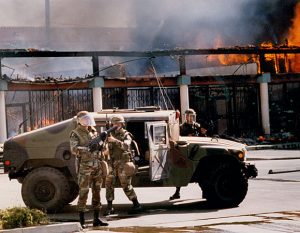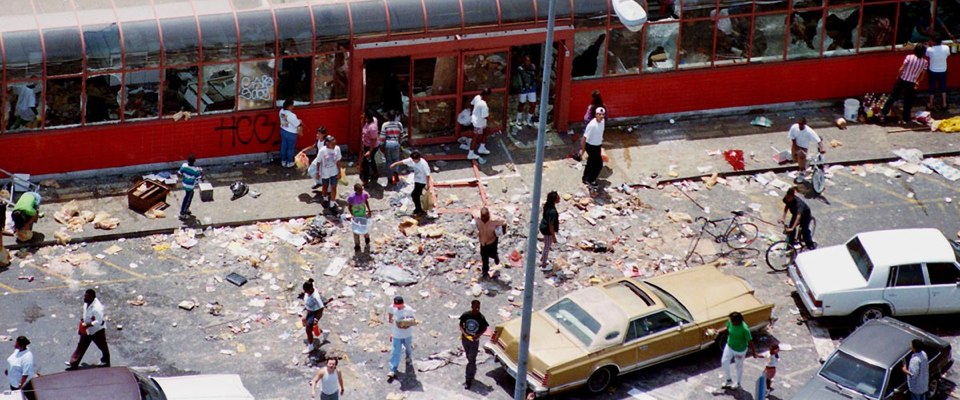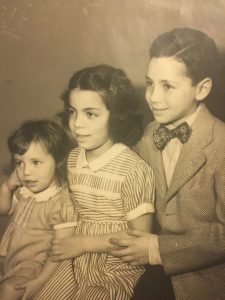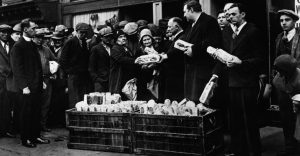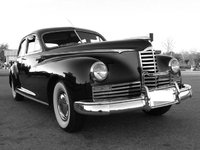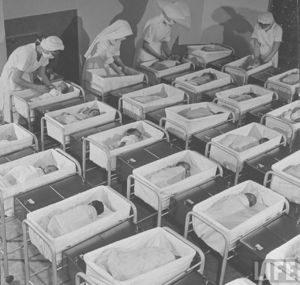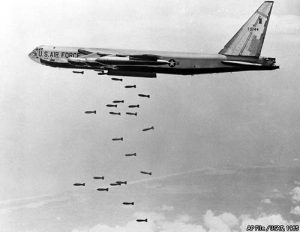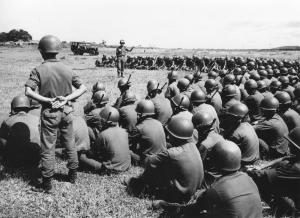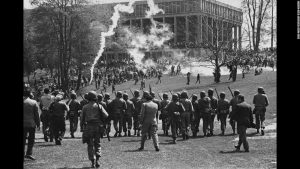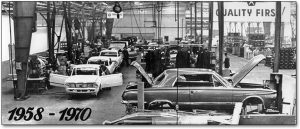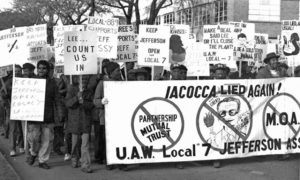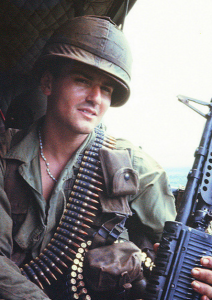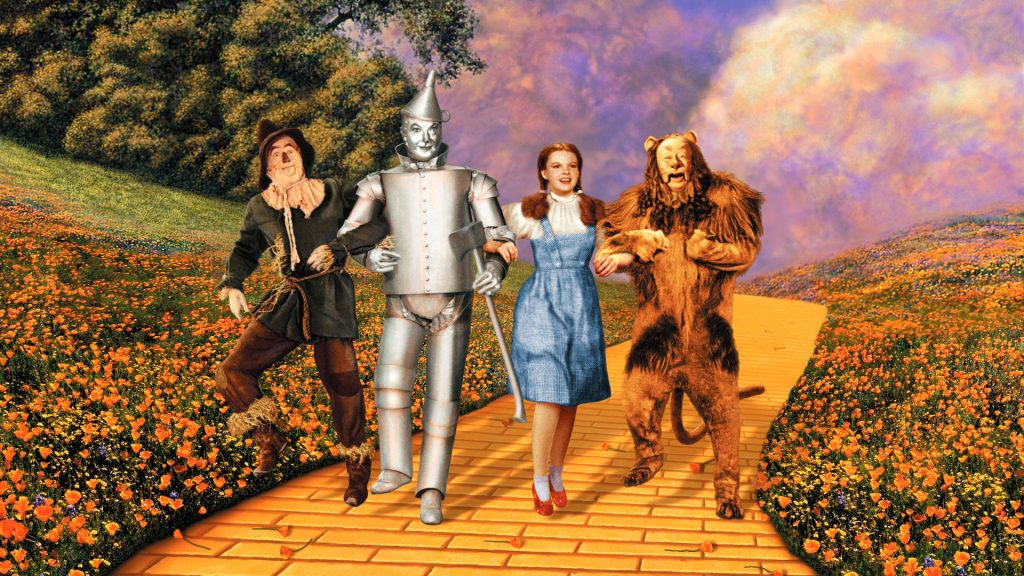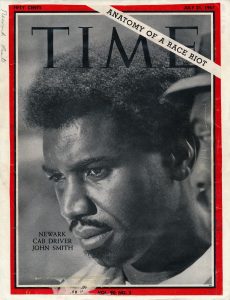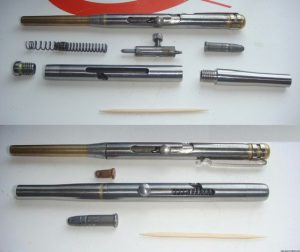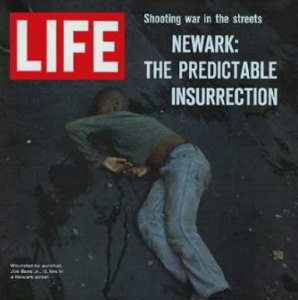By David Drawbaugh
In 1947, Lester Maddox, one of the Nation’s foremost segregationists, opened a fried chicken restaurant in Atlanta, Georgia called The Pickrick (1). The restaurant quickly became well known for its quality food, reasonable prices, and strict whites only policy. Axe handles called “Pickrick Drumsticks” were sold in its souvenir shop, and came to symbolize the resistance to African American civil rights in Atlanta (2). In 1964, Maddox came to national attention after he violated the newly signed Civil Rights Act by refusing to serve three black men at The Pickrick (2). When the men tried to order, Maddox threatened them with a pistol and yelled “you no good dirty devils! You dirty communists!” (3). On July 22, 1964 The US District Court of Georgia ruled that Maddox was in contempt of court for failing to obey the Civil Rights Act, and ordered him to desegregate his restaurant within 20 days of the ruling (4). Maddox ultimately decided to close The Pickrick rather than integrate it (5).
Following the Pickrick scandal, Maddox served as Georgia’s 75th governor from 1967 to 1971. He campaigned hard for states rights, and maintained his staunch segregationist stance while in office (6). He was succeeded by Jimmy Carter, who ushered in a new age of Georgian political culture. During his gubernatorial inauguration speech on January 12, 1971, Carter declared that “the time of racial discrimination is over…No poor, rural, weak, or black person should ever have to bear the additional burden of being deprived of the opportunity for an education, a job, or simple justice.” (7). Carter was a stark contrast to Maddox. He increased the number of black judges and state employees in Georgia. He hired Rita Jackson Samuels, a black woman, to advise him (3). He placed a portrait of Martin Luther King Jr in the capitol building, despite resistance from white supremacists, and pushed policies through the legislature to provide state aid for poor black neighbourhoods so that they could improve their schools, parks, and community centers (3).
Among the social reforms that were accomplished in Georgia in the early 1970s was public school integration (8). The nationwide movement to desegregate public schools started with the Brown vs Board cases in the 1950s. Brown I in 1954 found the separate-but-equal standard to be unjust “on the principle that mere separation of the races violated the constitution.” (9). Brown II in 1955 required public schools across the Nation to integrate with all deliberate speed, “giving Brown I’s vision of equal justice under law enough time and enough legitimacy to enter the hearts and minds of the American people in a way unlikely ever to be undone.” (10). The widespread integration of public schools did not follow any coherent plan. Different states and cities went about it in various ways. One approach that was proposed in Georgia was to bus African American kids from predominantly black neighbourhoods into white neighbourhoods so that they could attend the schools there (8). Although Governor Carter strongly supported African American civil rights, he did not support this method of integration (11). Regardless, mandatory busing was implemented throughout Georgia in 1973, albeit at a limited scale (8).
Kevin and Andrew Drawbaugh were in 7th and 6th grade, respectively, when the busing started in Atlanta. They attended Sutton Middle School, a large public school located in Buckhead, Georgia, a white suburban neighbourhood in central Atlanta. Kevin recalls that on the first day of school in 1973, “the principle said over the intercom that a number of new students would be arriving soon.” (12). This was the first time he, his brother Andrew, and most of his classmates heard about the integration. “We were completely unprepared” he recalls, “there was no direction or warning from the teachers or administration.” (12). The failure of school board officials and administrators to prepare students and parents for the integration worsened the already tense situation it created. “It was a shock to the system” Andrew recalls (13).
Most of the kids bussed into Buckhead’s public schools were from Sandy Springs, a black neighbourhood just north of Buckhead. Kevin estimates that about 2,000 kids were introduced to the school system in 1973, roughly 600 of whom were sent to Sutton. Kevin and Andrew recall things being generally chaotic as a result of the busing. Andrew remembers “two girls getting into a fight with razor blades in the school parking lot, kids spraying hairspray in others kids’ faces, and a student hitting a teacher with a desk during class.” (13). Kevin remembers being regularly attacked on his way home from school, and being unable to learn in class due to disruptive students. “Some classes were alright, but others were pandemonium”, he recalls, “my history class was fine, but I didn’t learn anything in 7th grade math.” (12). Kevin also remembers about one quarter of his white classmates leaving Sutton over the course of the year to go to private schools. After the busing started, “private schools popped up all over the place, seemingly overnight” he recalls. (12). Things calmed down after a few years, and by the time Kevin was a senior at Northside High, Buckhead’s public high school, the violence had more or less ended. “The whole situation was destabilizing” Kevin recalls, “but once things settled down, I came to realize that it was a good thing.” (12). Andrew is grateful to have experienced integration first hand, and feels “sorry for the kids who missed the experience by going to private schools.” (13).
Berkeley Davenport grew up in a black neighbourhood in the southside of Atlanta, and was bussed into Sutton Middle School in 1973. Despite what Kevin and Andrew remember about integration, Mr. Davenport had an overwhelmingly positive experience at Sutton and Northside High. “I was excited to go to Sutton. I had never been in school with white kids, and I wasn’t at all afraid of it” he recalls, “acclimating myself to new teachers and students was a pleasurable thing.” (14). Mr. Davenport was exposed to one instance of violence, but he does not remember it being racially charged. “I was attacked by a bully in a bathroom, but I don’t think he attacked me because I’m black” he recalls (14). In fact, he does not remember experiencing or witnessing any significant black on white or white on black animosity. “I was nice to the white kids, and they were nice to me” he recalls (14). Mr. Davenport befriended Kevin in high school through ROTC, and looks back at his time at Sutton and Northside High with nostalgia, likening it to “a Simon and Garfunkel song that’s been implanted in my brain.” (14).
H.W. Brands’ American Dreams: The United States Since 1945 discusses the immediate reactions to Brown vs Board II’s requirement to desegregate public schools with all deliberate speed, but does not discuss how sentiments towards that requirement evolved throughout the mid to late 20th century. Brands uses Orval Faubus’ resistance to desegregating Arkansas’ public schools in 1957, just two years after Brown II, to represent national discontent towards integration. However, he fails to mention another example of public school integration, and thus provides a somewhat lacking account of it.
The evolution of Georgia’s gubernatorial political culture between the 1950s and 1970s is what paved the way for integration in the state. Marvin Griffin, Georgia’s 72nd Governor who served from 1955 to 1959 was stalwartly against African American civil rights (15). Ernest Vandiver, who succeeded Griffin, defended segregation as well, using the motto “No, not one”, meaning not one black child in a white school (16). Carl Sanders, who followed Vandiver, was also a segregationist, and endorsed Lester Maddox, who was his successor (17). It was not until Jimmy Carter was elected Governor in 1971 that Georgia’s approach to Brown II’s requirement changed in any marked way (3). Understanding how sentiments towards Brown vs Board I and II changed in the 1960s and 1970s is pivotal to understanding the desegregation of public schools. Brands does not discuss this in American Dreams. His account of Faubus’ resistance to integrating Little Rock’s Central High School is valuable but limited. It does not show the important evolution of political culture that occured in states like Georgia, and examines public school integration, an issue that spanned many decades, through a relatively small lense.
Sources
- Nystrom, Justin. “Lester Maddox (1915 – 2003).” New Georgia Encyclopedia, April 20, 2004. Accessed December 10, 2017. http://www.georgiaencyclopedia.org/articles/government-politics/lester-maddox-1915-2003
- CNN. “Former Georgia Governor Maddox Dies.” CNN Archives. June 25, 2003. Accessed December 10, 2017. https://web.archive.org/web/20080115140729/http://www.cnn.com/2003/ALLPOLITICS/06/25/maddox.dead/
- Balmer, Randall. Redeemer: The Life of Jimmy Carter. Basic Books, 2014. https://books.google.com/books?id=ezBnAgAAQBAJ&printsec=frontcover&source=gbs_atb#v=onepage&q&f=false
- Willis vs Pickrick Restaurant (US District Court for the District of Georgia July 22, 1964). https://law.justia.com/cases/federal/district-courts/FSupp/231/396/1444843/
- The New Georgia Encyclopedia. “The Pickrick Trial.” The New Georgia Encyclopedia. September 1, 2017. Accessed December 10, 2017. http://crdl.usg.edu/cgi/crdl?userid=public&dbs=crdl&ini=crdl.ini&action=retrieve&rkey=&rset=001&recno=2&numrecs=25
- The Guardian. “Lester Maddox.” The Guardian. June 25, 2003. Accessed December 10, 2017. https://www.theguardian.com/news/2003/jun/26/guardianobituaries
- Carter, Jimmy. “Governor Jimmy Carter’s Inaugural Address.” Speech, Inaugural Address, Georgia, Atlanta, January 12, 1971. Accessed December 10, 2017. https://web.archive.org/web/20161201224225/https://www.jimmycarterlibrary.gov/documents/inaugural_address.pdf
- Weems, William. “The Desegregation of Atlanta Schools.” Freedom on Film: Civil Rights in Georgia. 2007. Accessed December 10, 2017.
- Brands, H.W. American Dreams: The United States Since 1945. Penguin Books, 2010
- Chen, James Ming. “Poetic Justice.” University of Louisville School of Law Legal Studies Research Paper Series, August 16, 2005, 1-42. Accessed November 10, 2017. https://papers.ssrn.com/sol3/papers.cfm?abstract_id=778884http://www.civilrights.uga.edu/cities/atlanta/school_desegregation.htm
- Mohr, Charles. “Carter on Busing.” New York Times. Accessed December 10, 2017. http://www.nytimes.com/1976/05/26/archives/carter-on-busing.html
- Phone interview with Kevin Drawbaugh, November 11, 2017
- Phone interview with Andrew Drawbaugh, December 5, 2017
- Phone interview with Berkeley Davenport, December 8, 2017
- Buchanon, Scott. “Marvin Griffin (1907-1987).” New Georgia Encyclopedia, August 20, 2013. Accessed December 10, 2017. http://www.georgiaencyclopedia.org/articles/government-politics/marvin-griffin-1907-1982
- Carrier, Jim. A Travellers Guide to the Civil Rights Movement. Houghton Mifflin Harcourt, 2004. https://books.google.com/books?id=Sh2fEcB7vVwC&printsec=frontcover&source=gbs_atb#v=onepage&q&f=false
- Cook, James. “Carl Sanders (1925-2014)” New Georgia Encyclopedia, March 12, 2015. Accessed December 10, 2017. http://www.georgiaencyclopedia.org/articles/government-politics/carl-sanders-b-1925
Timeline
Selected Interview Quotations
- Interview with Kevin Drawbaugh, November 11, 2017.
- the principle said over the intercom that a number of new students would be arriving soon.
- We were completely unprepared, there was no direction or warning from the teachers or administration.
- Some classes were alright, but others were pandemonium. My history class was fine, but I didn’t learn anything in 7th grade math.
- Private schools popped up all over the place, seemingly overnight.
- The whole situation was destabilizing, but once things settled down, I came to realize that it was a good thing.
- Middle school is hard enough, and integration made it even harder.
- It was a hard few years, but things eventually calmed down.
- In shop class I saw one black girl slam another black girl in the head with a two by four.
- It was tough, but something had to happen. It was just unlucky that it had to happen to us.
- By Junior year I was going out to parties and restaurants with black kids. There was this pizza place on the border of Buckhead and Sandy Springs that we’d go to.
- Interview with Andrew Drawbaugh, December 5, 2017.
- It was a shock to the system.
- Two girls getting into a fight with razor blades in the school parking lot, kids spraying hairspray in others kids’ faces, and a student hitting a teacher with a desk during class.
- I feel sorry for the kids who missed the experience by going to private schools.
- Some teachers were indifferent, some were scared.
- I skipped like half a year of high school. I didn’t go because I was terrified. Why was I gonna go there, man? That’s crazy!
- There was a guy who would play drumsticks on the bell like 10 minutes before class was actually out. It was like a mental zoo, man.
- Interview with Berkeley Davenport, December 8, 2017.
- I was excited to go to Sutton. I had never been in school with white kids, and I wasn’t at all afraid of it.
- Acclimating myself to new teachers and students was a pleasurable thing.
- I was attacked by a bully in a bathroom, but I don’t think he attacked me because I’m black.
- I was nice to the white kids, and they were nice to me.
- Like a Simon and Garfunkel song that’s been implanted in my brain.
- The Jewish students were the friendliest. I don’t know if it’s because they were more open minded than other students. I would go out to parties with them and hangout with them.
- I learned how to respect people there. I learned how to be a person there.
- Everybody was trying to make life better it seemed, the white kids and the black kids.
- Prejudice is because people haven’t grown up, because people haven’t been exposed to other cultures.


